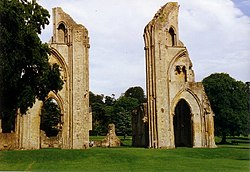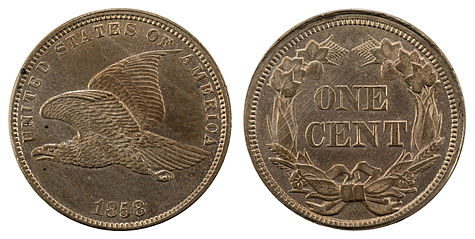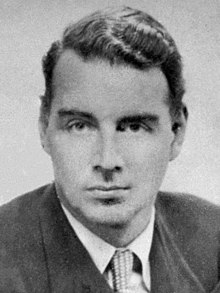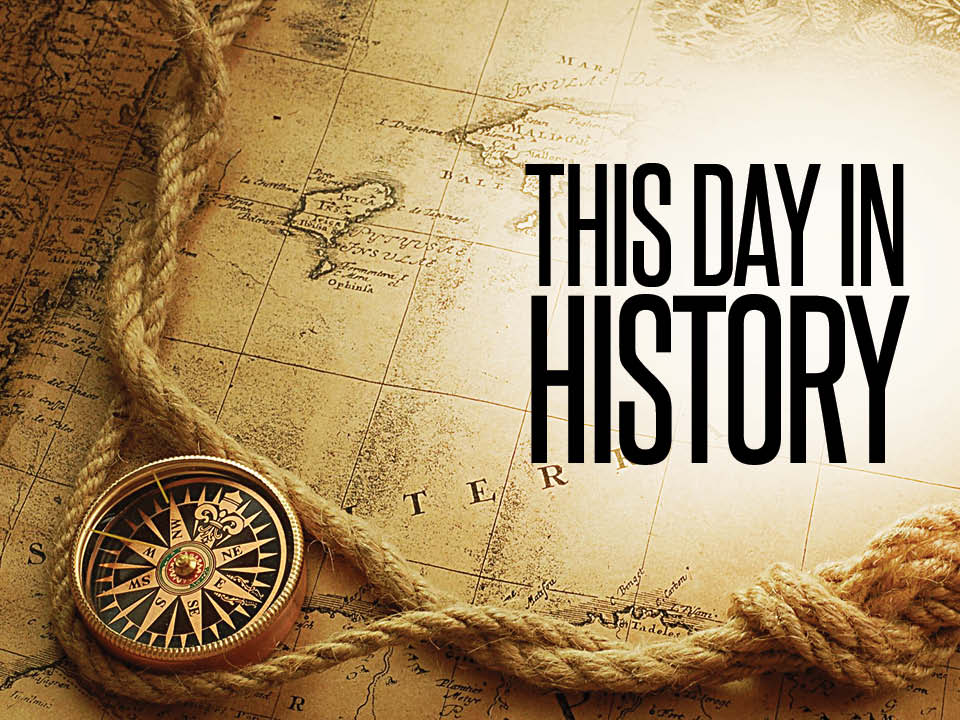May 25 is the 145th day of the year (146th in leap years) in the Gregorian calendar. There are 220 days remaining until the end of the year.
Holidays
- Africa Day (African Union)
- African Liberation Day (African Union)
- Christian Feast Day:
- Day of Youth, celebrated on Josip Broz Tito‘s birthday (the former Socialist Federal Republic of Yugoslavia)
- Earliest day on which Arbor Day can fall, celebrated on the last Sunday in May (Venezuela)
- Earliest day on which Children’s Day can fall, celebrated on the last Sunday in May (Hungary)
- Earliest day on which Memorial Day can fall, celebrated on the last Monday in May (United States)
- Earliest day on which Mother’s Day can fall, celebrated on the last Sunday in May (Algeria, Dominican Republic, France (First Sunday of June, if Pentecost occurs on this day), Haiti, Mauritius, Morocco, Sweden, Tunisia)
- Earliest day on which Turkmen Carpet Day can fall, celebrated on the last Sunday in May (Turkmenistan)
- First National Government / National Day (Argentina)
- Geek Pride Day (geek culture)
- Independence Day, celebrates the independence of Jordan from the United Kingdom in 1946
- International Missing Children’s Day
- Last bell (Russia, post-Soviet countries)
- Liberation Day (Lebanon)
- National Missing Children’s Day (United States)
- National Tap Dance Day (United States)
- Towel Day in honour of the work of the writer Douglas Adams
History
In 567 BC, Servius Tullius, the king of Rome, celebrates a triumph for his victory over the Etruscans.
In 585, B.C., first known prediction of a solar eclipse.
In 240 BC, First recorded perihelion passage of Halley’s Comet.
In 1085, Alfonso VI of Castile takes Toledo, Spain, back from the Moors.

In 1184, Glastonbury Abbey, England, was destroyed by fire, but subsequently rebuilt and by the 14th century was one of the richest and most powerful monasteries in England. The abbey controlled large tracts of the surrounding land and was instrumental in major drainage projects on the Somerset Levels. The abbey was suppressed during the Dissolution of the Monasteries under King Henry VIII of England. The last abbot, Richard Whiting (Whyting), was hanged, drawn and quartered as a traitor on Glastonbury Tor in 1539. From at least the 12th century the Glastonbury area has been associated with the legend of King Arthur, a connection promoted by medieval monks who asserted that Glastonbury was Avalon. Christian legends have claimed that the abbey was founded by Joseph of Arimathea in the 1st century.
In 1315, Edward Bruce invades Ireland.
In 1420, Henry the Navigator is appointed governor of the Order of Christ.
In 1502, Columbus discovered Martinique. Columbus, remember, made FOUR voyages to the New World…although he never made it to the mainland and never figured out that it WAS a New World rather than the East Indies he had been seeking.
In 1521, The Diet of Worms ends when Charles V, Holy Roman Emperor, issues the Edict of Worms, declaring Martin Luther an outlaw.
In 1644, Ming general Wu Sangui forms an alliance with the invading Manchus and opens the gates of the Great Wall of China at Shanhaiguan pass, letting the Manchus through towards the capital Beijing.
In 1659, Richard Cromwell resigns as Lord Protector of England following the restoration of the Long Parliament, beginning a second brief period of the republican government called the Commonwealth of England.
In 1721, John Copsen became the first insurance agent in the U.S. when he advertised coverage for vessels and other goods in Philadelphia.
In 1738, A treaty between Pennsylvania and Maryland ends the Conojocular War with settlement of a boundary dispute and exchange of prisoners.
In 1787, The Constitutional Convention presided by George Washington was convened in Philadelphia, PA after enough delegates had shown up for a quorum.
In 1793, Father Stephen Theodore Badin became the first Roman Catholic priest to be ordained in the United States, in a ceremony in Baltimore.
In 1798, United Irishmen Rebellion: The Carnew massacre, Dunlavin massacre and Carlow massacre take place.
In 1809, Chuquisaca Revolution: a group of patriots in Chuquisaca (modern day Sucre) revolt against the Spanish Empire, starting the South American Wars of Independence.
In 1810, May Revolution: citizens of Buenos Aires expel Viceroy Baltasar Hidalgo de Cisneros during the May week, starting the Argentine War of Independence. Argentina began its revolt as it declares independence from Napoleonic Spain (Nat’l Day).
In 1819, The Argentine Constitution of 1819 is promulgated.
In 1825, The American Unitarian Association was founded.
In 1829, John the Baptist is said to have appeared to Joseph Smith and Oliver Cowdery and ordained them priests (they later founded the Mormon Church).
In 1833, The Chilean Constitution of 1833 is promulgated.
In 1837, The Rebels of Lower Canada (Quebec) rebel against the British for freedom.
In 1841, The first Canadian parliament met in Ottawa
In 1844, A patent for an early gas engine is awarded to Stuart Perry of Newport, N.Y.
In 1844, The first telegraphed news dispatch, sent from Washington, D.C., to Baltimore, appeared in the Baltimore Patriot.
In 1854, Americans bombarded Nicaragua

The Flying Eagle cent is a one-cent piece that was struck by the Mint of the United States as a pattern coin in 1856, and released for circulation on May 25, 1857. The coin was designed by Mint Chief Engraver James B. Longacre, with the eagle in flight based on the work of Longacre’s predecessor, Christian Gobrecht. By the early 1850s, the large cent in circulation (about the size of a half dollar) was becoming both unpopular in commerce and expensive to coin. After experimenting with various sizes and compositions, the Mint decided on an alloy of 88% copper and 12% nickel for a new, smaller cent. After the Mint produced patterns with an 1856 date and gave them to legislators and officials, Congress formally authorized the new piece in February 1857. It was issued in exchange for the worn Spanish colonial silver coin that had circulated in the U.S. until then, as well as for its larger predecessor. So many cents were issued that they choked commercial channels, especially as they were not legal tender and no one had to take them. The eagle design did not strike well, and was replaced in 1859 by Longacre’s Indian Head cent.
In 1861, John Merryman is arrested under suspension of writ of habeas corpus it later sparks a supreme court decision protecting writ.
In 1864, The U-S House of Representatives voted to repeal the Fugitive Slave Act. No longer did escaped slaves face forcible return to their owners.
In 1865, In Mobile, Alabama, 300 are killed when an ordnance depot explodes.
In 1878, Gilbert and Sullivan‘s comic opera H.M.S. Pinafore opens at the Opera Comique in London.
In 1895, The playwright, poet, and novelist Oscar Wilde is convicted of “committing acts of gross indecency with other male persons” and sentenced to serve two years in prison.
In 1895, James P. Lee first published “Gold In America — A Practical Manual”. It is said to be the first book about regular folks finding gold in “them thar hills”.
In 1895, The Republic of Formosa is formed, with Tang Ching-sung as its president.
In 1898, The first American troops left San Francisco for Manila.
In 1911, Revolution in Mexico overthrows President Jose Porfirio Diaz.
In 1914, The United Kingdom’s House of Commons passes the Home Rule Act for devolution in Ireland.
In 1915, In Europe, the second Battle of Ypres ended with casualties around 105,000. The Germans used poison gas for the first time.
In 1925, Scopes Trial: John T. Scopes is indicted for teaching Charles Darwin‘s theory of evolution in Tennessee.
In 1926, Sholom Schwartzbard assassinates Symon Petliura, the head of the government of the Ukrainian People’s Republic, which is in government-in-exile in Paris.
In 1927, The Ford Motor Company announced that its popular automobile model, the Model T, known as the Tin Lizzie, would not be rolling off assembly lines anymore. Instead, the discontinued car would be replaced by the more modern Model A.
In 1935, Jesse Owens of Ohio State University breaks three world records and ties a fourth at the Big Ten Conference Track and Field Championships in Ann Arbor, Michigan.
In 1936, The Remington Rand strike, led by the American Federation of Labor, begins.
In 1937, First airmail letter to circle the globe returns to New York.
In 1938, Spanish Civil War: The bombing of Alicante takes place, with 313 deaths.
In 1940, World War II: The German 2nd Panzer Division captures the port of Boulogne-sur-Mer; the surrender of the last French and British troops marks the end of the Battle of Boulogne
In 1944, The first German V-1 “buzz bomb” hit London
In 1945, Arthur C. Clark proposes relay satellites in geosynchronous orbit.
In 1946, The parliament of Transjordan makes Abdullah I of Jordan their Emir. Jordan gains independence from Britain (National Day) as Transjordan (now Jordan) became a kingdom as it proclaimed its new monarch, King Abdullah Ibn Ul-Hussein.
In 1949, Chinese communist forces entered Shanghai as Nationalist troops abandoned the city and prepared to move to the island of Formosa, now called Taiwan.
In 1950, Public Transport: Green Hornet disaster. A Chicago Surface Lines streetcar crashes into a fuel truck, killing 33.
In 1950, The Brooklyn-Battery Tunnel is opened in New York City and is the longest tunnel in the U.S.

In 1951, Guy Francis de Moncy Burgess and Donald Duart Maclean, British foreign office officials, disappeared from London. It was later discovered they had spied for Russia.
In 1953, Nuclear testing: At the Nevada Test Site, the United States conduct their first and only nuclear artillery test.
In 1953, The first public television station in the United States officially begins broadcasting as KUHT from the campus of the University of Houston.
In 1955, In the United States, a night-time F5 tornado strikes the small city of Udall, Kansas, killing 80 and injuring 273. It is the deadliest tornado to ever occur in the state and the 23rd deadliest in the U.S.
In 1955, First ascent of Kangchenjunga (8,586 m.), the third-highest mountain in the world, by a British expedition led by Charles Evans. Joe Brown and George Band reached the summit on May 25, followed by Norman Hardie and Tony Streather the next day.
In 1961, Apollo program: The U.S. President John F. Kennedy announces before a special joint session of the Congress his goal to initiate a project to put a “man on the Moon” before the end of the decade.
In 1961, The biggest fire in Singapore history. The Bukit Ho Swee Fire
In 1961, NASA civilian pilot Joseph A Walker takes X-15 to 32,770 m.
In 1961, President John F. Kennedy asked the nation to work toward putting a man on the moon “before this decade is out”. The first man landed on the moon in 1969.
In 1962, The Old Bay Line, the last overnight steamboat service in the United States, goes out of business.
In 1962, US unions AFL-CIO begins campaign for 35-hour work week.
In 1963, In Addis Ababa, Ethiopia, the Organisation of African Unity is established.
In 1964, the closing of schools to avoid desegregation is ruled unconstitutional by the U.S. Supreme Court (Prince Edward County, Va. had to reopen and desegregate its schools).
In 1964, “BATMAN” HEADLINE BRUCE WAYNE’s butler ALFRED PENNYWORTH is killed off in the JUNE 1964 issue of “DETECTIVE” comics, on newsstands during late May (but the character would return in the October 1966 issue)

In 1965, Sonny Boy Williamson II, American singer-songwriter and harmonica player (b. 1908). He known professionally as Sonny Boy Williamson, was an American blues harmonica player, singer and songwriter, from Mississippi. He is acknowledged as one of the most charismatic and influential blues musicians, with considerable prowess on the harmonica and highly creative songwriting skills. He recorded successfully in the 1950s and 1960s, and had a direct influence on later blues and rock performers. His head stone found in or near Tutwiler, Mississippi, list his name as Aleck Miller, his birth date as March 11,1908 and date of death as June 23, 1965.
In 1966, Explorer program: Explorer 32 launches.
In 1966, The first prominent dàzìbào during the Cultural Revolution in China is posted at Peking University.
In 1967, Celtic F.C. from Glasgow, Scotland, becomes the first ever Northern European team to win the European Cup; with previous winners being from Spain, Italy and Portugal.
In 1968, Gateway Arch Saint Louis Gateway Arch is dedicated. The Gateway Arch, part of the Jefferson National Expansion Memorial in St. Louis, was dedicated in a rain-soaked ceremony presided over by Vice President Hubert H. Humphrey.
In 1973, HNS Velos (D-16), while participating in a NATO exercise and in order to protest against the dictatorship in Greece, anchored at Fiumicino, Italy, refusing to return to Greece.
In 1973, Skylab 2’s first mission is launched with crew Joseph Kerwin, Pete Conrad Jr., and Paul Weitz.
In 1977, Star Wars (retitled Star Wars Episode IV: A New Hope in 1981) is released in theaters, inspiring the Jediism religion and Geek Pride Day holiday.
In 1977, Chinese government removes a decade old ban on William Shakespeare‘s work, effectively ending the Cultural Revolution started in 1966.
In 1979, American Airlines Flight 191: In Chicago, a McDonnell Douglas DC-10 crashes during takeoff at O’Hare International Airport killing all 271 on board and two people on the ground.
In 1979, Etan Patz, who is six years old, disappears from the street just two blocks away from his home in New York City, prompting an international search for the child, and causing the U.S. President Ronald Reagan to designate May 25 as National Missing Children’s Day (in 1983).
In 1981, In Riyadh, the Gulf Cooperation Council is created between Bahrain, Kuwait, Oman, Qatar, Saudi Arabia and the United Arab Emirates.
In 1982, HMS Coventry is sunk during the Falklands War.
In 1983, The robot spacecraft Pioneer-10 left the solar system, the first man-made object to do so. It took Pioneer-10 11 years just to GET to the edge of the solar system.
In 1985, Bangladesh is hit by a tropical cyclone and storm surge, which kills approximately 10,000 people.
In 1986, Hands Across America takes place. An estimated 7 million Americans participated in “Hands Across America,” forming a line across the country from Los Angeles to New York to bring attention to and raise money for the nation’s hungry and homeless. The event raised $24.5 million.
In 1997, A military coup in Sierra Leone replaces President Ahmad Tejan Kabbah with Major Johnny Paul Koromah.
In 1997, Senator Strom Thurmond (Republican, South Carolina) became the longest-serving senator in US history, marking 41 years and ten months of service.
In 1998, Leaders in the former Soviet republic of Georgia and its breakaway province of Abkhazia agreed to a cease-fire after a week of fighting.
In 1999, The United States House of Representatives releases the Cox Report which details the People’s Republic of China‘s nuclear espionage against the U.S. over the prior two decades.
In 1999, Independent Counsel Kenneth Starr decided against re-prosecuting Whitewater figure Susan McDougal and Julie Hiatt Steele, a witness in the Monica Lewinsky investigation, after both their trials ended with hung juries.
In 2000, Liberation Day of Lebanon. Israel withdraws its army from most of the Lebanese territory after 22 years of its first invasion in 1978.
In 2000, Iranian state radio announced that former President Hashemi Rafsanjani had resigned from the incoming parliament, depriving hard-liners of a leading figure in the power struggle between conservatives and reformists.
In 2001, Erik Weihenmayer, 32 years old, of Boulder, Colorado, becomes the first blind person to reach the summit of Mount Everest.
In 2002, China Airlines Flight 611 disintegrates in mid-air and crashes into the Taiwan Strait. All 225 people on board are killed.
In 2008, NASA‘s Phoenix lander lands in Green Valley region of Mars to search for environments suitable for water and microbial life.
In 2009, North Korea allegedly tests its second nuclear device. Following the nuclear test, Pyongyang also conducted several missile tests building tensions in the international community.
In 2011, Oprah Winfrey airs her last show, ending her twenty-five-year run of The Oprah Winfrey Show.
In 2012, The Dragon spacecraft became the first commercial spacecraft to successfully rendezvous with the International Space Station.
In 2013, Suspected Maoist rebels kill at least 28 people and injure 32 others in an attack on a convoy of Indian National Congress politicians in Chhattisgarh, India.
In 2013, A gas cylinder explodes on a school bus in the Pakistani city of Gujrat, killing at least 18 people.
In 2014, Nashville taxpayers recently paid $30,000 so an artist could glue several shovels, rakes and pickaxes together, paint them black and mold them into a 12-foot high structure along the Cumberland River. City officials erected the sculpture, “Tool Fire,” last year at Shelby Bottoms Park, only three miles from the Grand Ole Opry. Regular park patron Emily Amos of Nashville told Tennessee Watchdog that she’s not an art aficionado, but she doesn’t mind taxpayers paying for such a project. “I totally support the art community,” Amos said. “Besides, that money is going to local artists.” Well Actually — it’s not.
In 2015, At least 46 people are killed as a result of floods caused by a tornado in Texas and Oklahoma.
In 2016, Two suicide bombings, conducted by the Islamic State of Iraq and Syria, killed at least 45 potential army recruits in Aden, Yemen.
In 2016, Eight bombings were carried out by the Islamic State of Iraq and Syria in Jableh and Tartus, coastline cities in Syria. 184 people were killed and at least 200 people injured.

